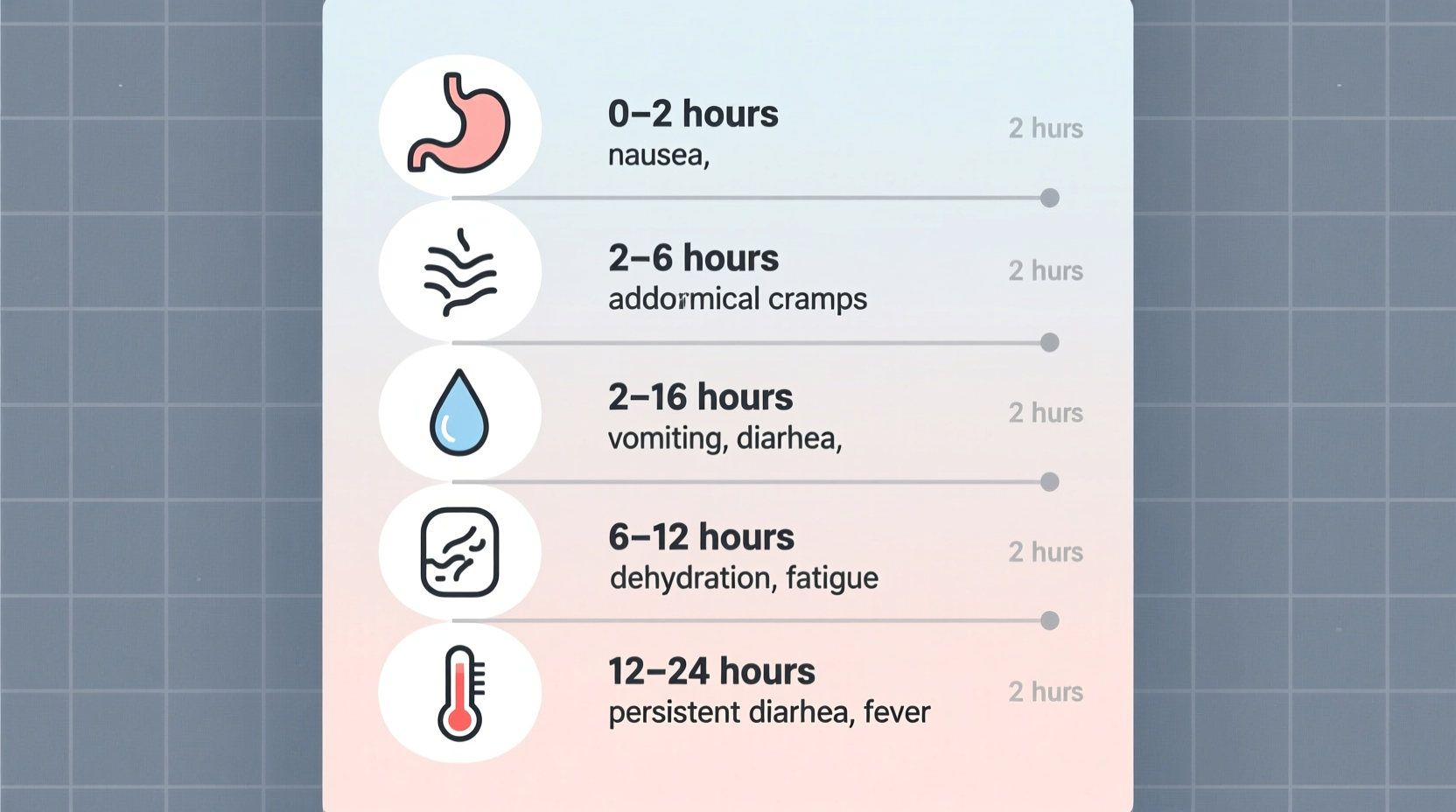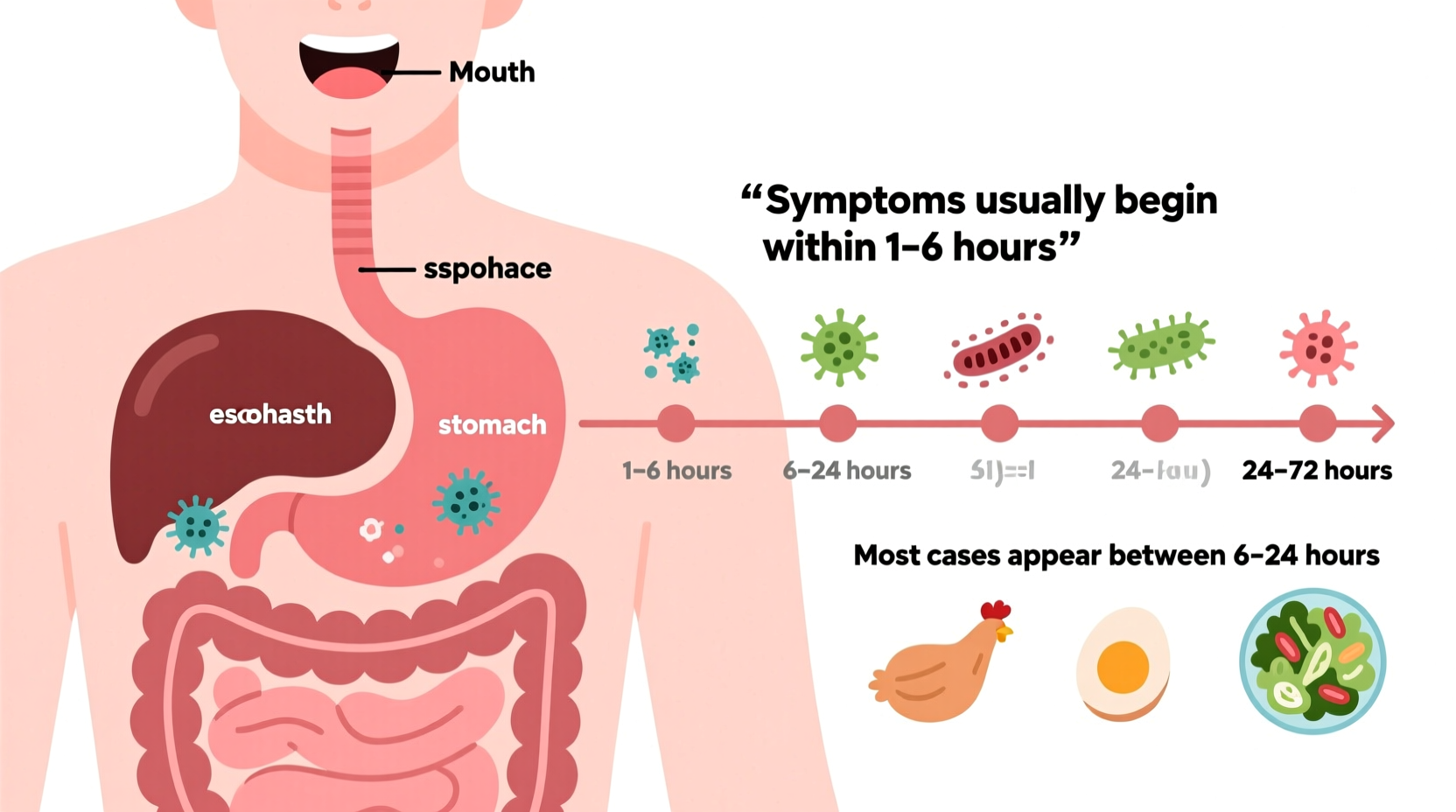Most food poisoning symptoms begin within 1 to 6 hours after consuming contaminated food, but the exact timeframe varies significantly depending on the specific pathogen. Bacterial causes like Staphylococcus aureus can trigger symptoms in as little as 30 minutes, while viral infections such as norovirus typically take 12-48 hours to manifest. Some foodborne illnesses, including hepatitis A, may not show symptoms for up to 28 days.
Understanding Food Poisoning Onset Timelines
When you're suddenly feeling nauseous after a meal, your first urgent question is likely: How long does it take food poisoning to set in? This critical timeframe determines whether your symptoms are likely food-related and when you should seek medical attention. Understanding these timelines can help you identify potential sources and respond appropriately.
Why Onset Time Matters for Your Health
The incubation period—the time between consuming contaminated food and experiencing symptoms—provides vital clues about the specific pathogen causing your illness. Recognizing these patterns helps healthcare providers make faster, more accurate diagnoses. For instance, if symptoms strike within hours of eating, it suggests a preformed toxin like those from Staphylococcus aureus, while longer delays often indicate bacterial growth in your digestive system.
| Pathogen Type | Typical Onset Time | Common Sources | Duration of Illness |
|---|---|---|---|
| Staphylococcus aureus | 30 minutes - 8 hours | Deli meats, salads, pastries | 1-2 days |
| Bacillus cereus (vomiting type) | 1-6 hours | Fried rice, leftovers | 6-24 hours |
| Norovirus | 12-48 hours | Raw shellfish, contaminated surfaces | 1-3 days |
| Salmonella | 6-72 hours | Raw eggs, poultry, produce | 4-7 days |
| E. coli O157:H7 | 1-10 days | Undercooked beef, raw milk | 5-10 days |
| Hepatitis A | 15-50 days | Contaminated water, shellfish | Several weeks |
Key Factors That Influence Symptom Onset
Several variables affect how quickly food poisoning symptoms appear after exposure:
Pathogen Characteristics
Different microorganisms have distinct biological mechanisms. Toxin-mediated illnesses (like Staphylococcus aureus) cause rapid symptoms because the preformed toxin immediately affects your system. In contrast, infection-based illnesses (like Salmonella) require time for bacteria to multiply in your digestive tract before symptoms emerge.
Individual Health Factors
Your immune status significantly impacts symptom onset. According to the Centers for Disease Control and Prevention, children, elderly individuals, and those with compromised immune systems often experience faster symptom development and more severe illness. Your stomach acidity level and gut microbiome composition also influence how quickly pathogens take effect.
Contamination Level
The quantity of pathogens consumed plays a crucial role. Higher doses typically lead to shorter incubation periods. For example, consuming a large amount of Staphylococcus aureus toxin might trigger vomiting within 30 minutes, while a smaller dose could take 4-6 hours to produce symptoms.

When to Seek Immediate Medical Attention
Certain symptoms indicate potentially serious complications requiring prompt medical evaluation:
- Signs of dehydration (extreme thirst, dry mouth, little or no urination)
- Blood in vomit or stool
- High fever (above 101.5°F or 38.6°C)
- Neurological symptoms like blurred vision or muscle weakness
- Symptoms lasting more than 3 days without improvement
The U.S. Food and Drug Administration emphasizes that certain populations—including pregnant women, young children, older adults, and immunocompromised individuals—should consult a healthcare provider at the first sign of foodborne illness.
Preventing Food Poisoning: Practical Safety Measures
Understanding how long does it take food poisoning to set in helps identify potential sources, but prevention remains your best defense:
Temperature Control
Maintain proper food temperatures using the "danger zone" principle. Keep cold foods below 40°F (4°C) and hot foods above 140°F (60°C). The World Health Organization reports that keeping food out of the temperature danger zone (40°F-140°F) significantly reduces bacterial growth that causes foodborne illness.
Safe Food Handling Practices
- Wash hands thoroughly before and after handling food
- Use separate cutting boards for raw meats and produce
- Cook meats to proper internal temperatures (use a food thermometer)
- Refrigerate leftovers within 2 hours (1 hour if room temperature exceeds 90°F)
Common Misconceptions About Food Poisoning Timelines
Many people mistakenly believe their last meal caused their illness. In reality, symptoms often appear long after the actual contaminated meal. For example, if you develop norovirus symptoms 24 hours after eating sushi, the contaminated food was likely consumed 1-2 days earlier. The CDC Travel Health Guidelines note that accurate food history tracking is essential for proper diagnosis but often challenging due to these delayed symptom onsets.
Recovering From Food Poisoning
When symptoms strike, focus on:
- Hydration: Sip clear fluids or oral rehydration solutions
- Bland foods: Introduce BRAT diet (bananas, rice, applesauce, toast) as tolerated
- Rest: Allow your body time to recover
- Avoid anti-diarrheal medications initially, as they can prolong certain infections
When Food Poisoning Becomes Serious
While most cases resolve without complications, certain pathogens can cause severe outcomes. E. coli O157:H7 infections may lead to hemolytic uremic syndrome (HUS), particularly in children, typically developing about 7 days after initial symptoms. The Mayo Clinic reports that approximately 5-10% of E. coli infections progress to this potentially life-threatening complication.











 浙公网安备
33010002000092号
浙公网安备
33010002000092号 浙B2-20120091-4
浙B2-20120091-4